Military collections in barracks and private ownership often consist of a wide range of materials from different eras, from the Napoleonic wars through to 21st century combat. Due to this, the conditions for display and signs of historic deterioration may vary, making collection care a task which requires many areas of expertise. Our multidisciplinary team at Fine Art Restoration Company is composed of professional conservators with specialist skills for paintings, paper, textiles, metals and more – as well as our administrative staff, who can help you to navigate the complexities of restoration and military artwork preservation for diverse items.
 Above: a severely damaged oil painting on canvas before restoration by our conservation team
Above: a severely damaged oil painting on canvas before restoration by our conservation team
In this article we will cover the many ways in which materials commonly found in military collections can be cared for, as well as their vulnerabilities and the historically accurate conservation treatments which are available for their safe keeping.
 Above: the same oil painting following a full restoration by our conservation team
Above: the same oil painting following a full restoration by our conservation team
Protecting paper military documents, photographs & letters
Paper is one of the most vulnerable materials, as it often has a structure which is reliant on perfect environmental conditions to avoid deterioration. An atmosphere which is too humid may cause rusty brown marks known as foxing, as well as mould growth and disturbances, whilst a dry atmosphere will bring about brittle decay as moisture is lost from the fibres.
 Above: a military portrait photograph which was restored by our conservator – the signature was preserved separately after a new, acid-free mount was arranged as the original had been causing damage
Above: a military portrait photograph which was restored by our conservator – the signature was preserved separately after a new, acid-free mount was arranged as the original had been causing damage
Our team is able to offer professional restoration of paper, from handwritten letters, military documentation and signed certificates, through to watercolours, photographs and prints. This includes the cleansing of foxing, discolouration and mould growth, as well as flattening and even the smooth reconstruction of torn or brittle pieces. Damage from the environment and accidents can occur to paper from any era, though of course older pieces are at higher risk due to a potentially weakened structure.
 Above: paper artworks can be restored and given a new frame and a mount, reducing the risk of future deterioration – as seen here in this military scene before and after restoration
Above: paper artworks can be restored and given a new frame and a mount, reducing the risk of future deterioration – as seen here in this military scene before and after restoration
All of these treatments are tailored for the specific paper by our ICON accredited conservator, who not only brings the document or image back to better visual standards but ensures their safety into the future with museum care techniques. Broken or fragile paper can be relined on conservation appropriate tissue paper to prevent further deterioration and treatments to clear mould or foxing will also reduce future risks of it returning.
 Above: an example of UV fading occurring to a print – one image has been kept out of direct sunlight (left) and the other has been over exposed leading to loss of colour (right)
Above: an example of UV fading occurring to a print – one image has been kept out of direct sunlight (left) and the other has been over exposed leading to loss of colour (right)
Framing is an important part of paper care, as the use of acidic or improper methods can damage paper over time or lead to devastating deterioration. Acidic mounts and backing boards are a common feature our conservation team come across, which is why all of our framing is arranged with non-acidic materials which are to a protective, museum-level standard. Our team can also arrange bespoke framing for large or unusual artworks, documents or items, all with the option of UV protective glass to reduce the risk of fading.
 Above: handwritten or printed letters and documents can also be restored with careful techniques which cleanse the paper but do not disturb the ink
Above: handwritten or printed letters and documents can also be restored with careful techniques which cleanse the paper but do not disturb the ink
For paper care, we recommend that a level of humidity at around 40% with temperatures of around 20 degrees. Even with UV protection, prolonged sunlight exposure is not recommended and a shaded location is always best for sensitive works on paper.
 Above: a pastel artwork which is at high risk of flaking due to the sensitive nature of loose pigments, it may also be accidentally smudged or encounter fading in the wrong conditions – see our article on pastels for further information
Above: a pastel artwork which is at high risk of flaking due to the sensitive nature of loose pigments, it may also be accidentally smudged or encounter fading in the wrong conditions – see our article on pastels for further information
Care for military medals, sculptures & metallic items
Over time metal objects, such as medals, statues and small objects, may become tarnished or experience adverse reactions to their environment resulting in corrosion. Most atmospheric corrosion can be prevented if the relative humidity is below 65% – but if an object is starting to corrode at this level, it may be the display location which is causing an issue.
 Above: medals, medallions, swords, and other metallic awards or regalia can be restored and preserved by our conservators
Above: medals, medallions, swords, and other metallic awards or regalia can be restored and preserved by our conservators
If you have a metal object displayed upon a wooden or painted shelf and you notice the bottom of it starting to corrode it’s likely the surrounding materials are the cause of this, as wood and paint can emit acidic components which attack the metal. We recommend that in cases of concern that our team is called to offer professional conservation treatments, in order to clear away any active corrosion and to help in ensuring a safe environment for the metal item to be returned to. Our professional conservators can restore tarnished medals and further items to a safe level, ensuring that they do not continue to degrade to the point of loss.
 Above: an example of a tarnishing bronze bust with risk of corrosion (left) and the restored finish which can be achieved (right)
Above: an example of a tarnishing bronze bust with risk of corrosion (left) and the restored finish which can be achieved (right)
Uncoated metals can be sensitive to moisture, therefore cleaning with anything water based can cause corrosion, as well as household chemicals. The safest way to keep your important metal pieces clean is by using a soft brush to clean off surface dust and dirt weekly. A top care tip from our team is to use silica gel packets in display cases. This can be used to draw out moisture from the air and control humidity.
Textile restoration for military hats, uniforms & regalia
Military textiles often feature a wide range of materials, from wool and leather through to synthetic fibres. Our professional textile conservators are able to restore areas of staining and damage which have occurred due to their environment, age, a disaster or an accident.
 Above: medals from a variety of eras can be restored and professionally framed with conservation techniques
Above: medals from a variety of eras can be restored and professionally framed with conservation techniques
Our textile conservators have restored many military items over the years, including a hat from the second world war which had areas of deterioration after being frozen with holes due to moth damage. Holes and tears can be carefully repaired with conservation appropriate materials, whilst stains can be removed with tailored solutions. Our team can also arrange framing and display options for a wide range of uniforms and textiles, including the use of UV protective glass to avoid irreversible fading.
 Above: an army cap before and after restoration by our specialist textile conservator
Above: an army cap before and after restoration by our specialist textile conservator
It is important that any textile display is away from direct light or placed behind UV protective glass to avoid bleaching or discolouration from the sun, as some dyes are more steadfast than others. A steady atmosphere is also key in avoiding mould or brittle decay to the fibres. Humidity levels of around 45-60% are recommended, with light levels for display at no more than 50 LUX. Keeping the textiles and the area around them clear and clean helps prevent pest attack from mice and rats, moths, silverfish, beetles, and insect larvae – all of which can be safely eradicated by our team if discovered. If textiles are handled with bare hands, oil, salts and dirt from the skin can be transferred and this can lead to weakening over time, so we also recommend that clean cotton gloves should be worn when handling textiles to avoid this.
 Above: richly detailed textiles with various materials and precious elements can be restored by our trained team
Above: richly detailed textiles with various materials and precious elements can be restored by our trained team
Professional oil painting conservation for military collections
Paintings, such as important portraits and military crests or insignia, can be found on easels, wooden panels or more unusual materials, depending on their history and the circumstances of their creation. Our conservation team specialises in the full restoration of any artwork, from tears and holes through to flaking or discoloured painting surfaces.
 Above: the before and after of a restoration on a military equestrian portrait which was completed in our studio
Above: the before and after of a restoration on a military equestrian portrait which was completed in our studio
Over time, paintings may have become discoloured due to exposure from fireplaces or nicotine, their varnish layer may also have perished and become yellowed due to the botanical ingredients in the original surface. This can be cleared and removed by our team, revealing the true colours of the artwork. Any restoration work is then sealed between layers of non-yellowing, UV protective varnish to ensure the safety of the painting and to make sure that any retouching of pigment is never confused for the original. All painting restoration is completed with historic and artistic integrity, with the military artwork preservation at the forefront of tailored treatments.
Above: paintings can become discoloured over time due to their varnish or the atmosphere – here our conservator clears the varnish away with many small swabs, revealing the true colours
Handling and storing a painting incorrectly can lead to accidental damage. Ensure that the painting is flat, or better still, kept within its frame for extra protection. Check that all pathways are clear before attempting to move the artwork, always ask for extra help if it is a large piece. If settled on the ground, do not allow the canvas to lean against any corners or sharp objects. Avoid pets coming into the same space whilst the artwork is at their height. If the painting does become torn, our team can restore this with thread-by-thread techniques, bringing back stability to the structure, as well as the original visual impact.
 Above: an escape of water damaged this oil painting due to a ceiling leak, here it is before and after restoration by our conservators
Above: an escape of water damaged this oil painting due to a ceiling leak, here it is before and after restoration by our conservators
Wooden items and unusual objects
Unusual and unique items may also make up parts of your military collection, from personal items belonging to soldiers across history through to special souvenirs from military service. As well as artworks, our team can also restore sentimental objects and ornaments from a range of materials and eras, such as this wooden tray with marquetry inlay which was restored by our experts.
 Above: a wooden tray with insignia inlay which had broken parts restored by our team
Above: a wooden tray with insignia inlay which had broken parts restored by our team
Unique items of furniture such as writing desks and campaign chests can also be restored by our specialists, who use historically appropriate materials and treatments to preserve the integrity of all items. Routine upkeep can also be arranged, including appropriate waxing or varnishing of surfaces which may have deteriorated over time.
 Above: ceramics, marble and items with porcelain features or mixed media can also be restored by our specialists
Above: ceramics, marble and items with porcelain features or mixed media can also be restored by our specialists
If you have an unusual object, ornament or wooden item which may need conservation assessments, advice or restoration, please do not hesitate to reach out to our team who will be happy to assist. We can also arrange display cases and framing for a wide range of unusual or oversized items for their ongoing protection.
 Above: notes on the back of a canvas, as well as the gilded original frames can also be restored by our professional conservators
Above: notes on the back of a canvas, as well as the gilded original frames can also be restored by our professional conservators
How can we help?
Our specialist team is available to respond to all manner of damages, whether this has been caused by a disaster or accident, to reduce any concern for artwork or item safety. We can also offer assistance with routine maintenance, cleaning or restoration for a wide range of items to benefit your military collection.
To make contact regarding military artwork preservation please email us via [email protected] or call 0207 112 7576
You may also be interested in:
- Historic House services
- Church restoration services
- School restoration services
- Conservation architect services

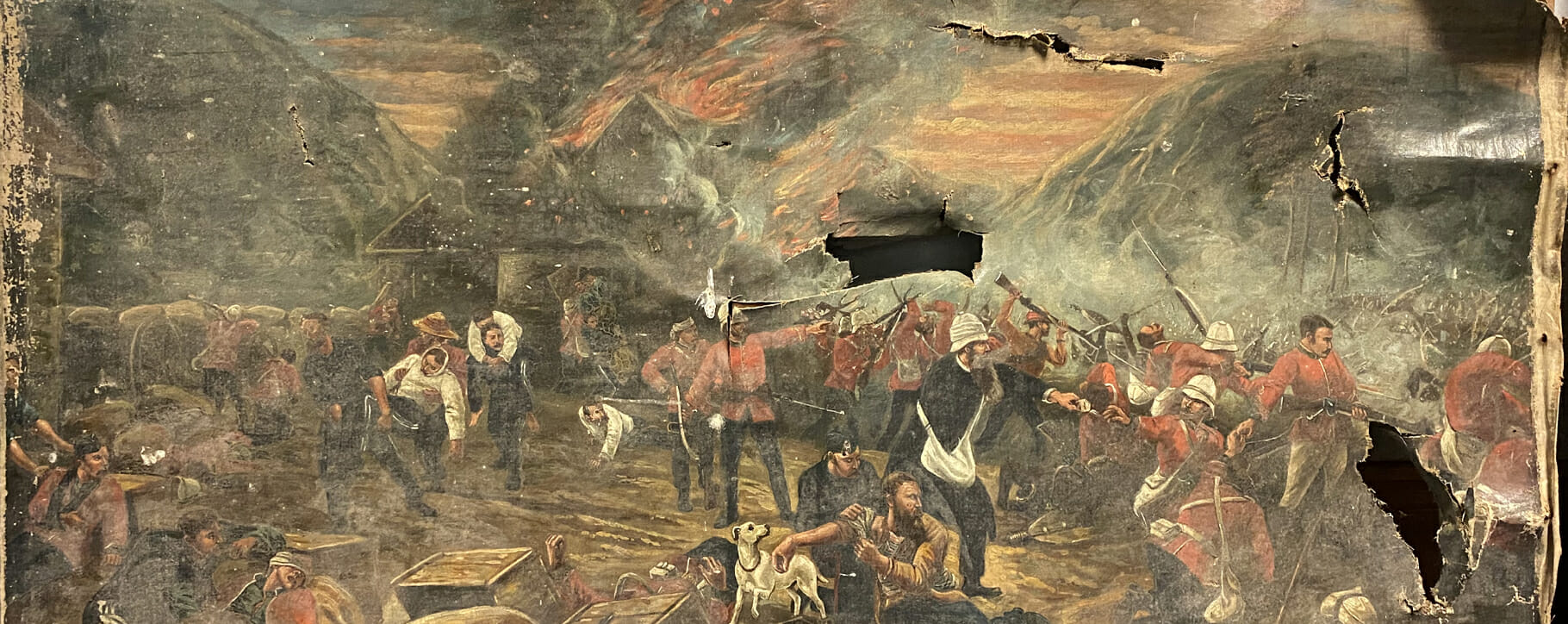 Above: a severely damaged oil painting on canvas before restoration by our conservation team
Above: a severely damaged oil painting on canvas before restoration by our conservation team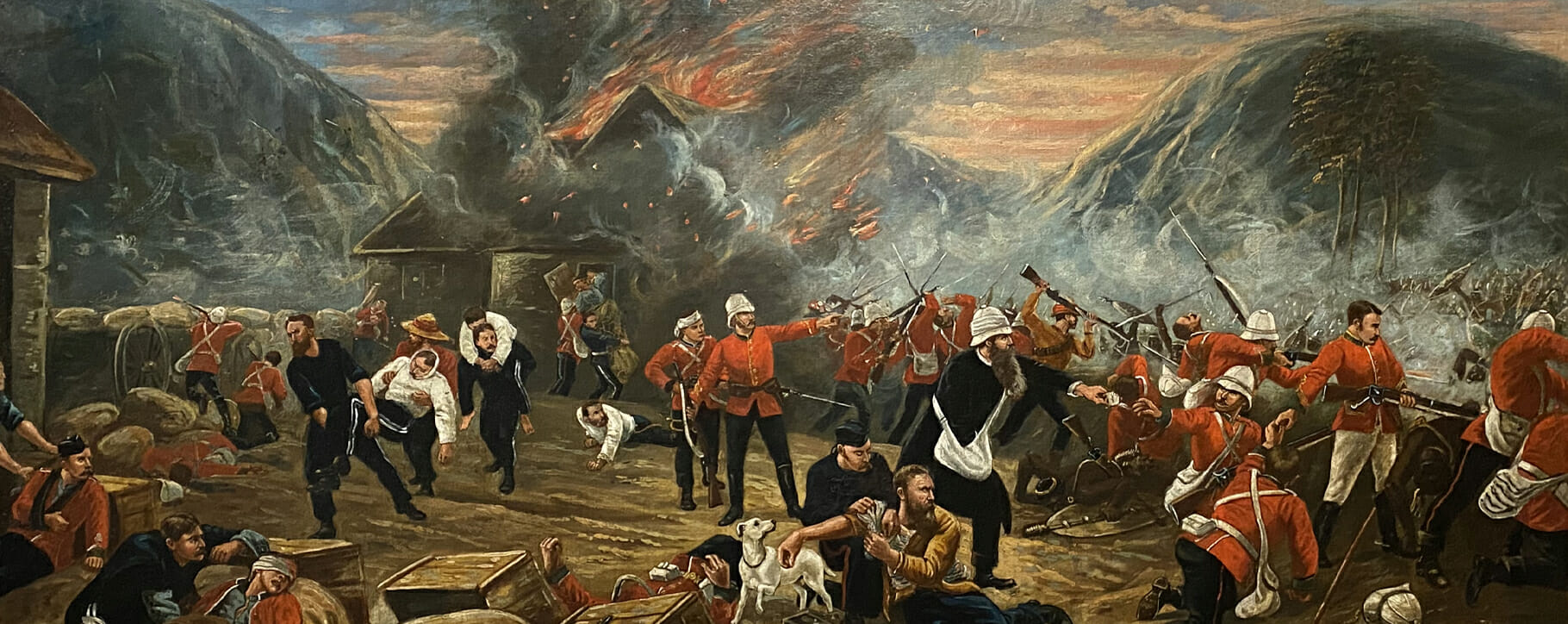 Above: the same oil painting following a full restoration by our conservation team
Above: the same oil painting following a full restoration by our conservation team Above: a military portrait photograph which was restored by our conservator – the signature was preserved separately after a new, acid-free mount was arranged as the original had been causing damage
Above: a military portrait photograph which was restored by our conservator – the signature was preserved separately after a new, acid-free mount was arranged as the original had been causing damage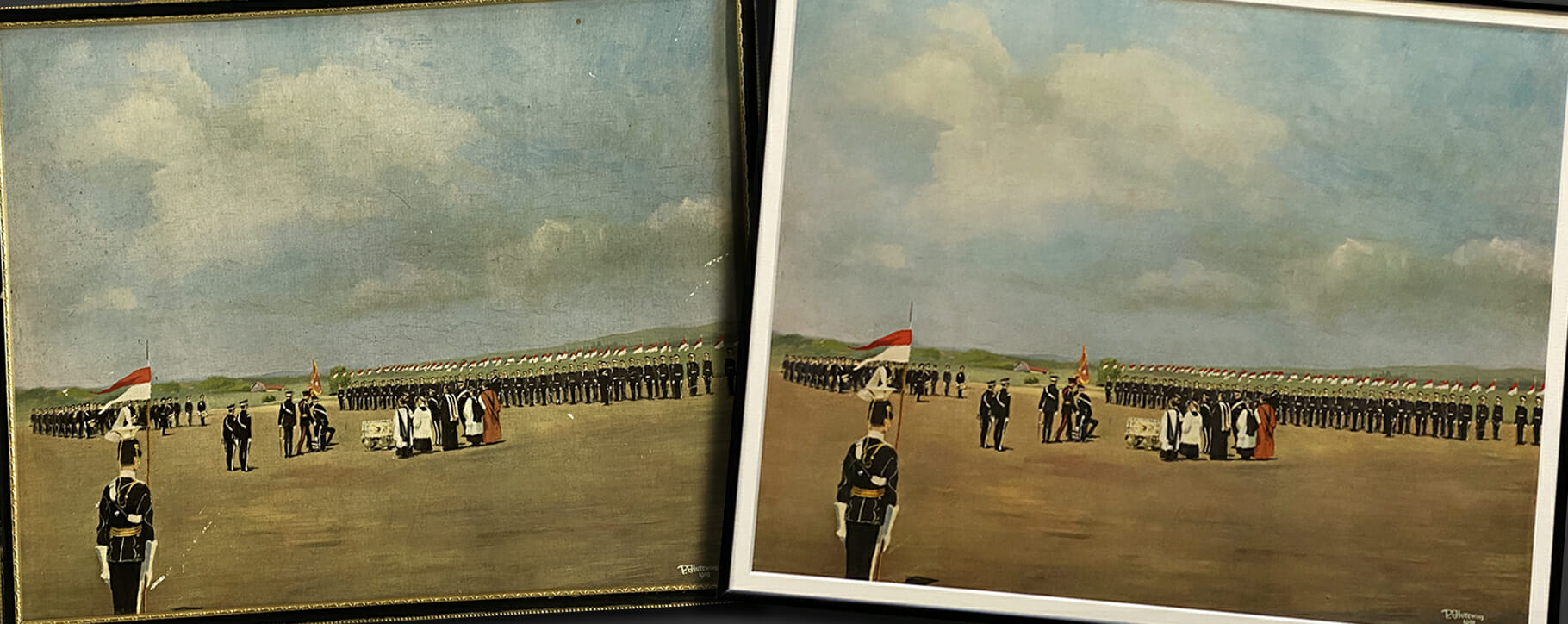 Above: paper artworks can be restored and given a new frame and a mount, reducing the risk of future deterioration – as seen here in this military scene before and after restoration
Above: paper artworks can be restored and given a new frame and a mount, reducing the risk of future deterioration – as seen here in this military scene before and after restoration 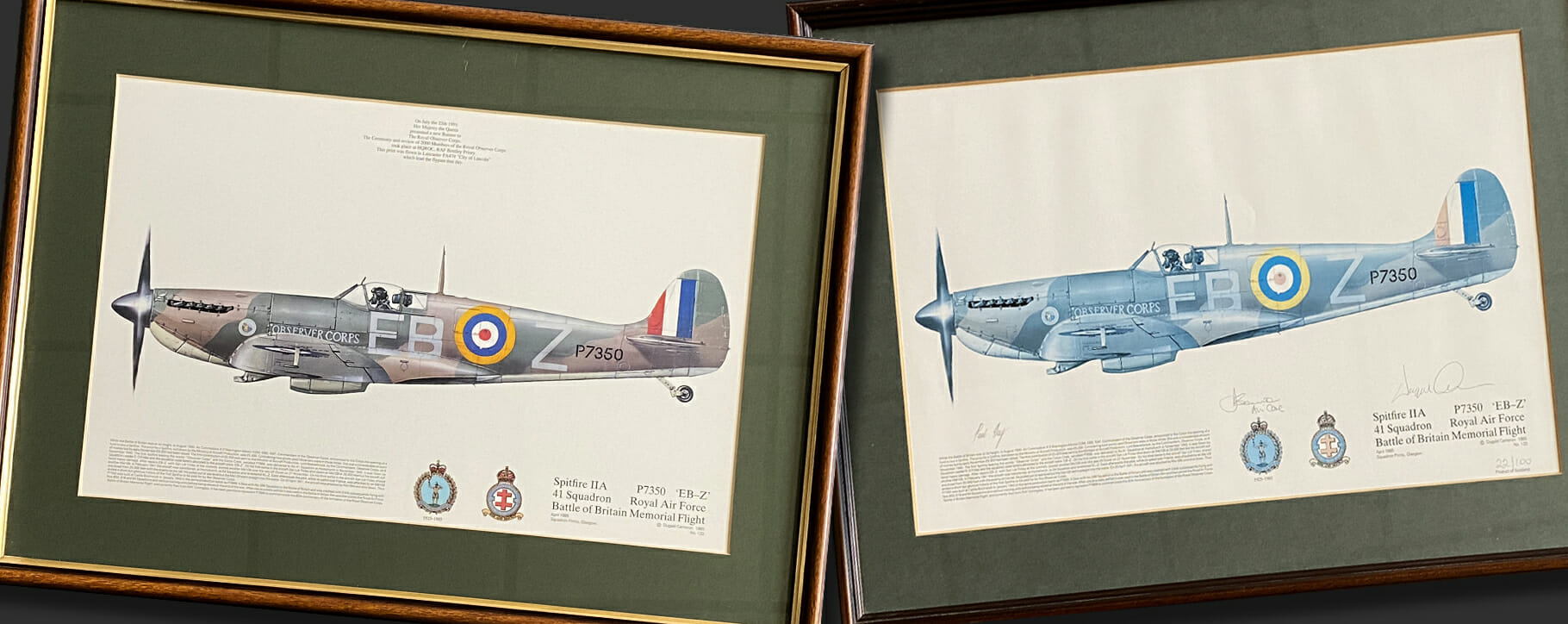 Above: an example of UV fading occurring to a print – one image has been kept out of direct sunlight (left) and the other has been over exposed leading to loss of colour (right)
Above: an example of UV fading occurring to a print – one image has been kept out of direct sunlight (left) and the other has been over exposed leading to loss of colour (right)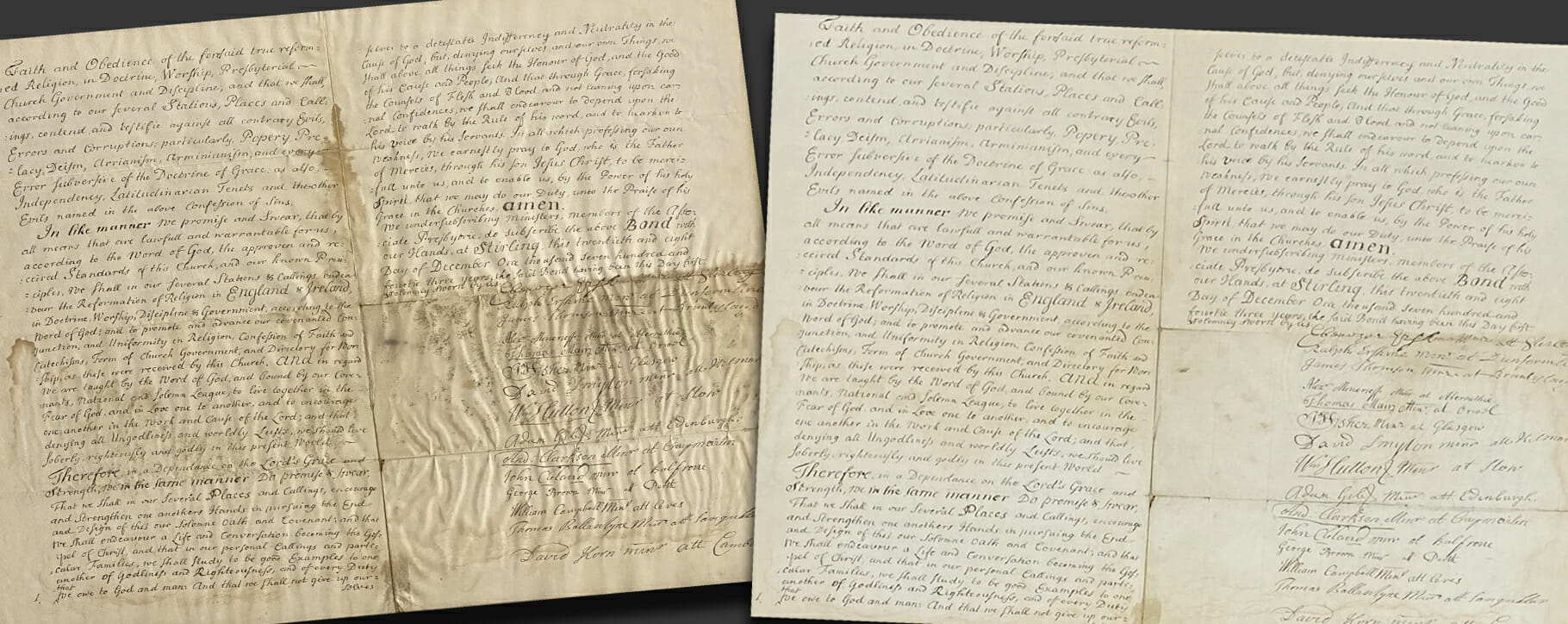 Above: handwritten or printed letters and documents can also be restored with careful techniques which cleanse the paper but do not disturb the ink
Above: handwritten or printed letters and documents can also be restored with careful techniques which cleanse the paper but do not disturb the ink Above: a pastel artwork which is at high risk of flaking due to the sensitive nature of loose pigments, it may also be accidentally smudged or encounter fading in the wrong conditions – see our article on
Above: a pastel artwork which is at high risk of flaking due to the sensitive nature of loose pigments, it may also be accidentally smudged or encounter fading in the wrong conditions – see our article on  Above: medals, medallions, swords, and other metallic awards or regalia can be restored and preserved by our conservators
Above: medals, medallions, swords, and other metallic awards or regalia can be restored and preserved by our conservators Above: an example of a tarnishing bronze bust with risk of corrosion (left) and the restored finish which can be achieved (right)
Above: an example of a tarnishing bronze bust with risk of corrosion (left) and the restored finish which can be achieved (right)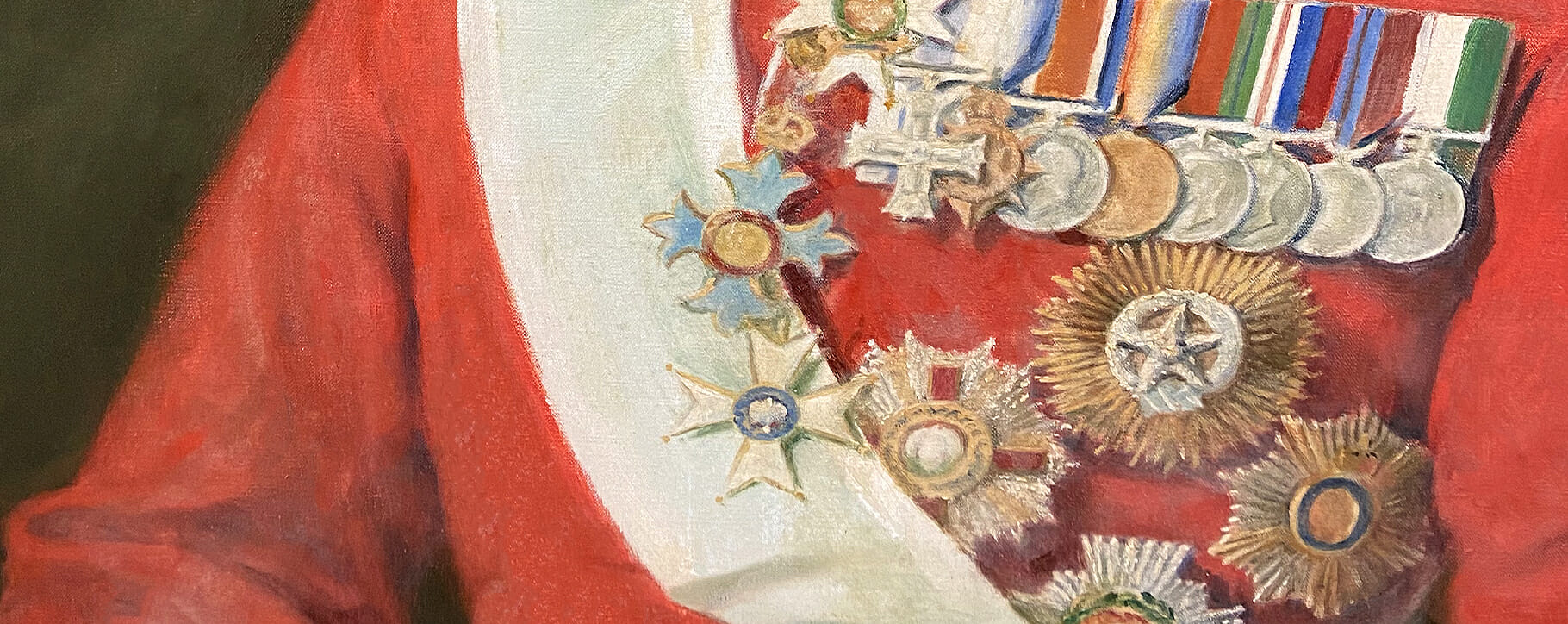 Above: medals from a variety of eras can be restored and professionally framed with conservation techniques
Above: medals from a variety of eras can be restored and professionally framed with conservation techniques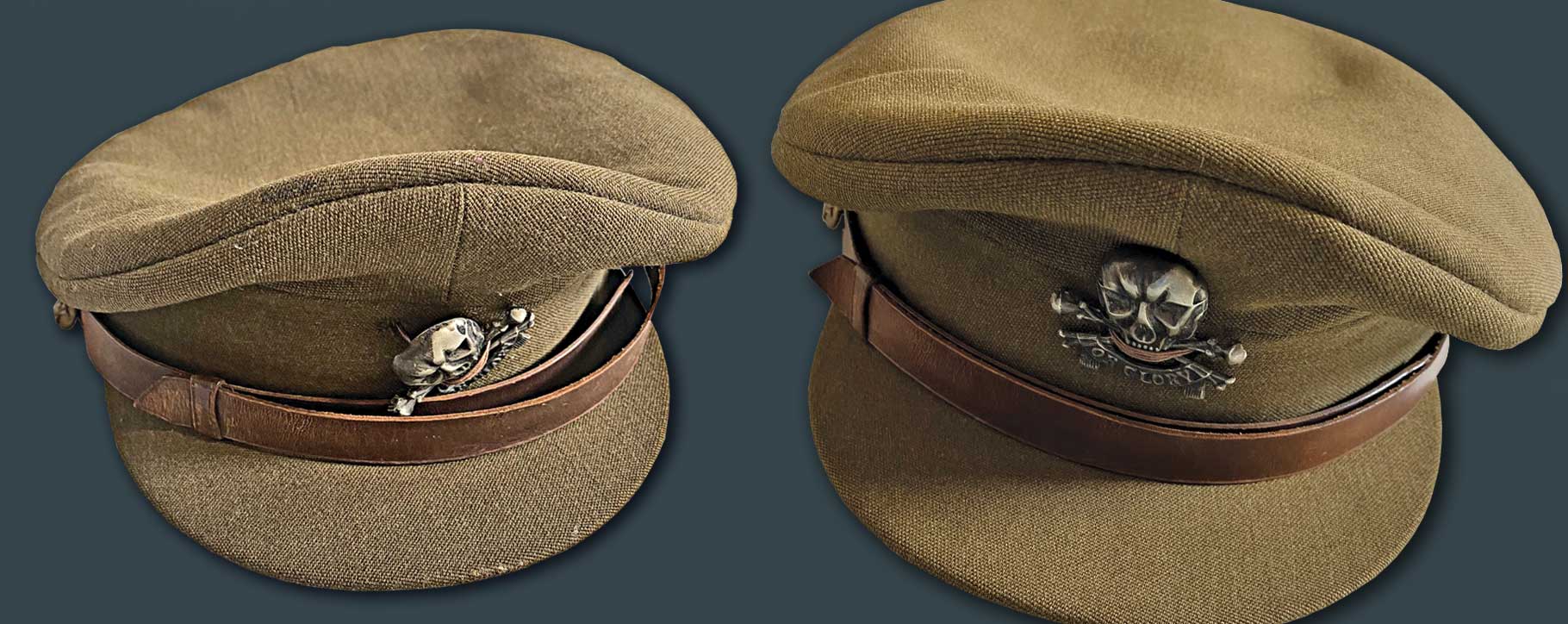 Above: an army cap before and after restoration by our specialist textile conservator
Above: an army cap before and after restoration by our specialist textile conservator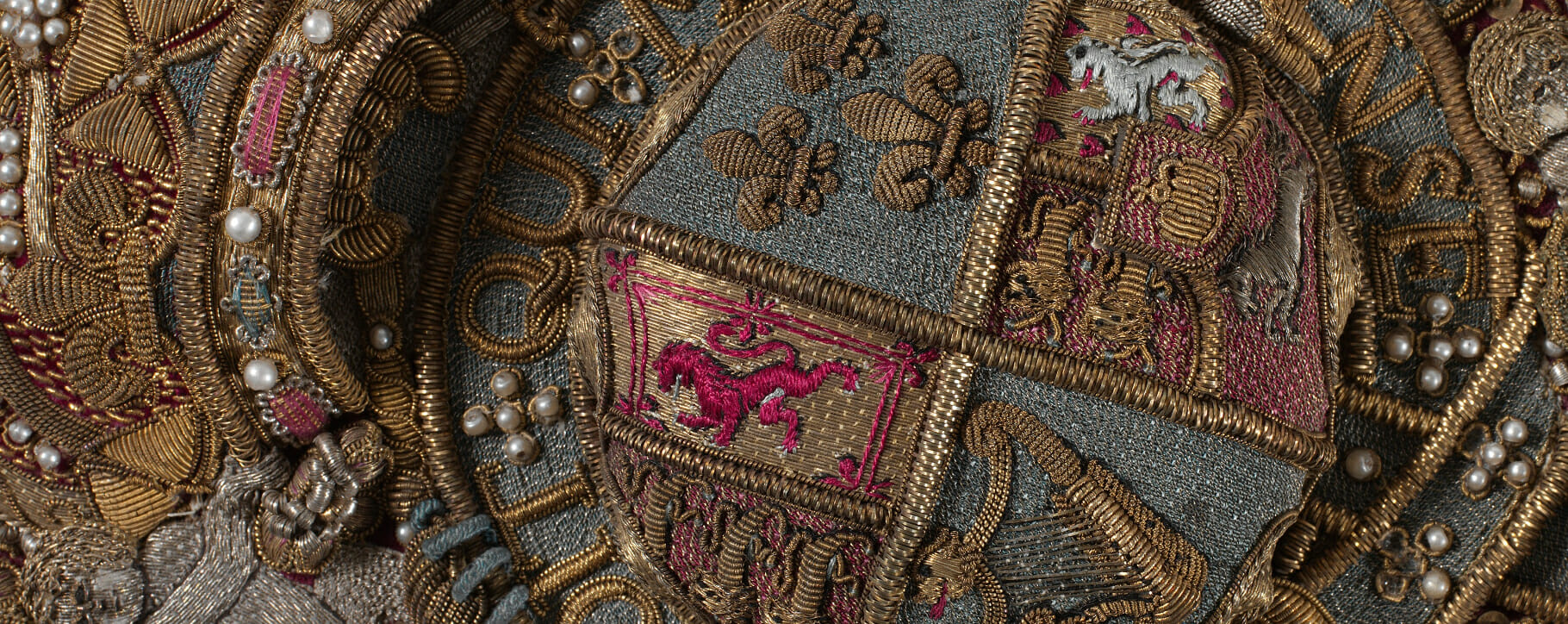 Above: richly detailed textiles with various materials and precious elements can be restored by our trained team
Above: richly detailed textiles with various materials and precious elements can be restored by our trained team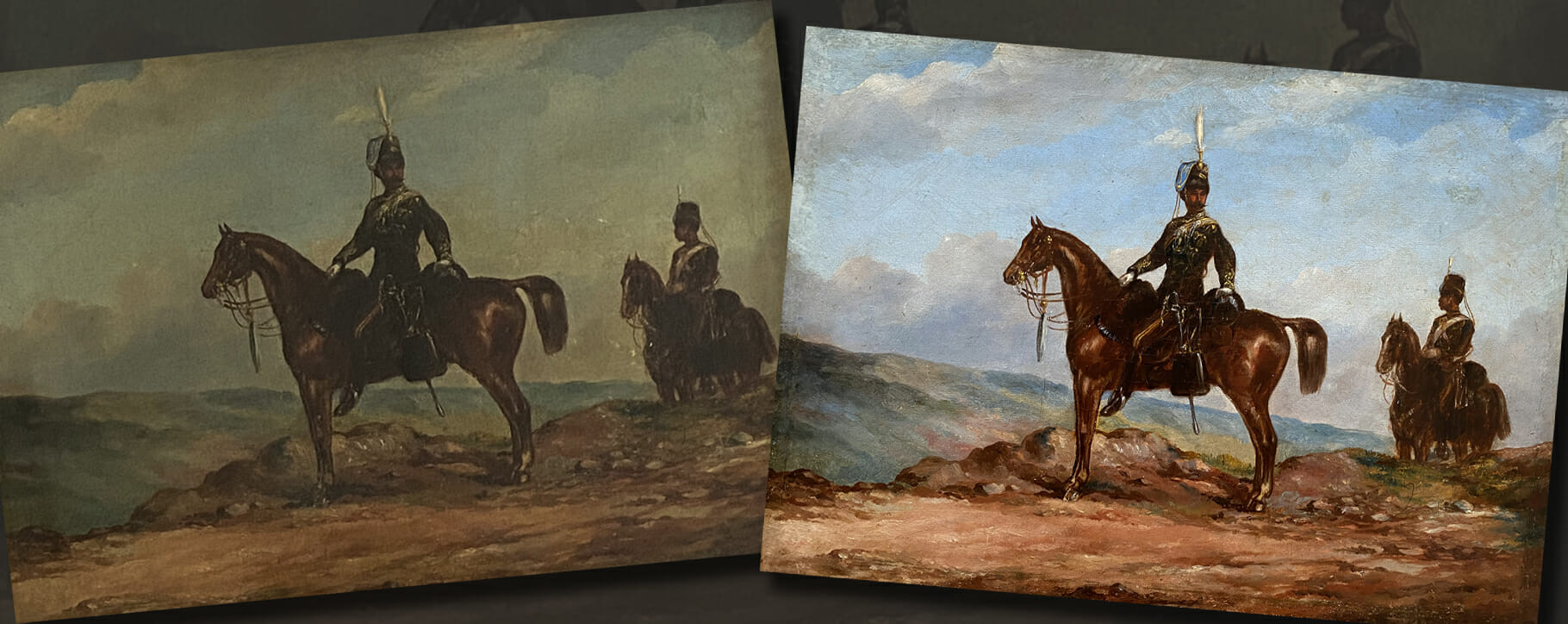 Above: the before and after of a restoration on a military equestrian portrait which was completed in our studio
Above: the before and after of a restoration on a military equestrian portrait which was completed in our studio Above: an escape of water damaged this oil painting due to a ceiling leak, here it is before and after restoration by our conservators
Above: an escape of water damaged this oil painting due to a ceiling leak, here it is before and after restoration by our conservators Above: a wooden tray with insignia inlay which had broken parts restored by our team
Above: a wooden tray with insignia inlay which had broken parts restored by our team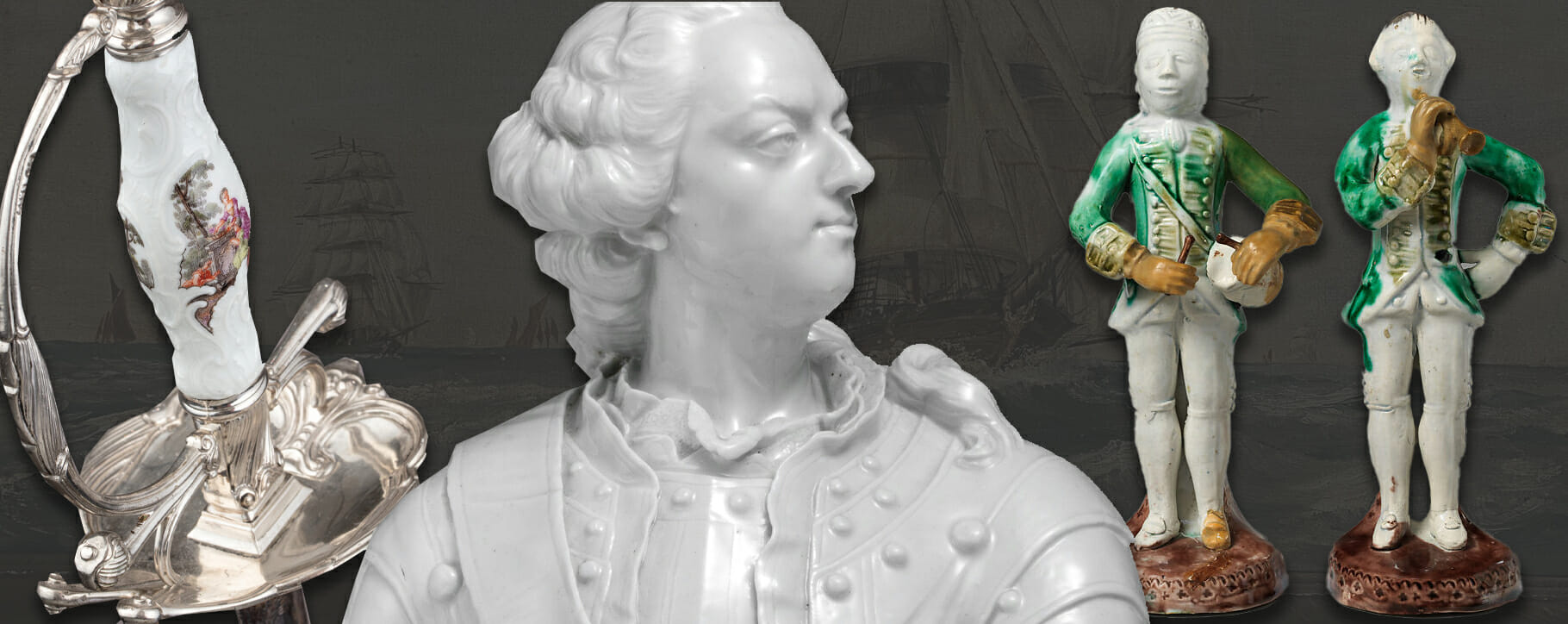 Above: ceramics, marble and items with porcelain features or mixed media can also be restored by our specialists
Above: ceramics, marble and items with porcelain features or mixed media can also be restored by our specialists 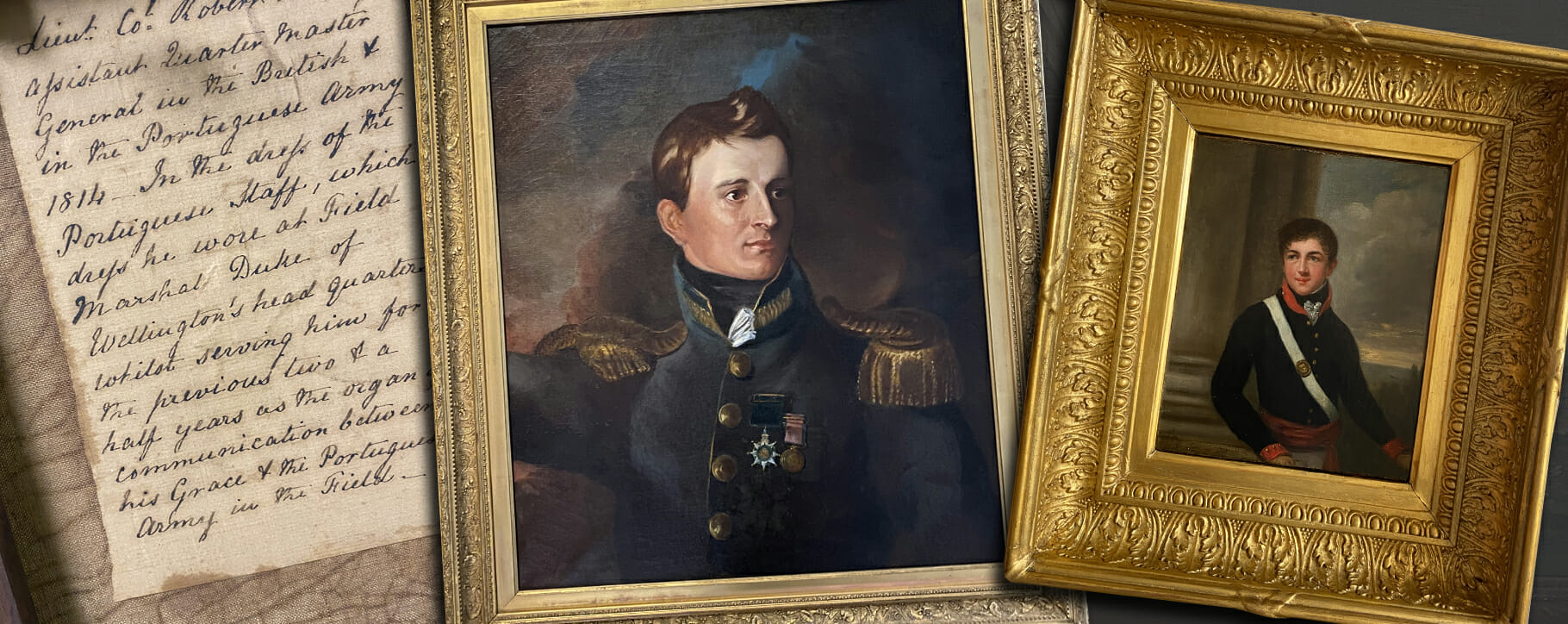 Above: notes on the back of a canvas, as well as the gilded original frames can also be restored by our professional conservators
Above: notes on the back of a canvas, as well as the gilded original frames can also be restored by our professional conservators




